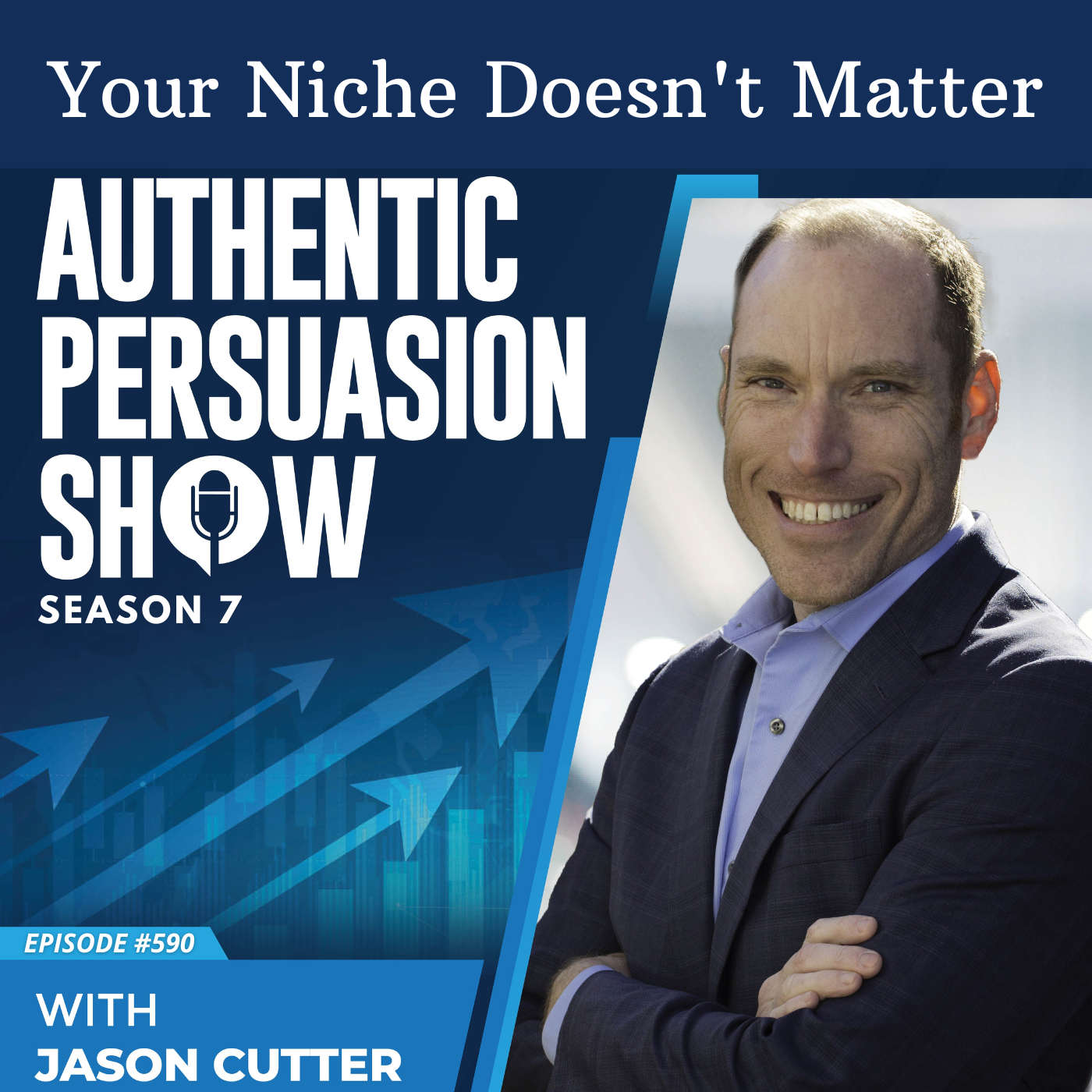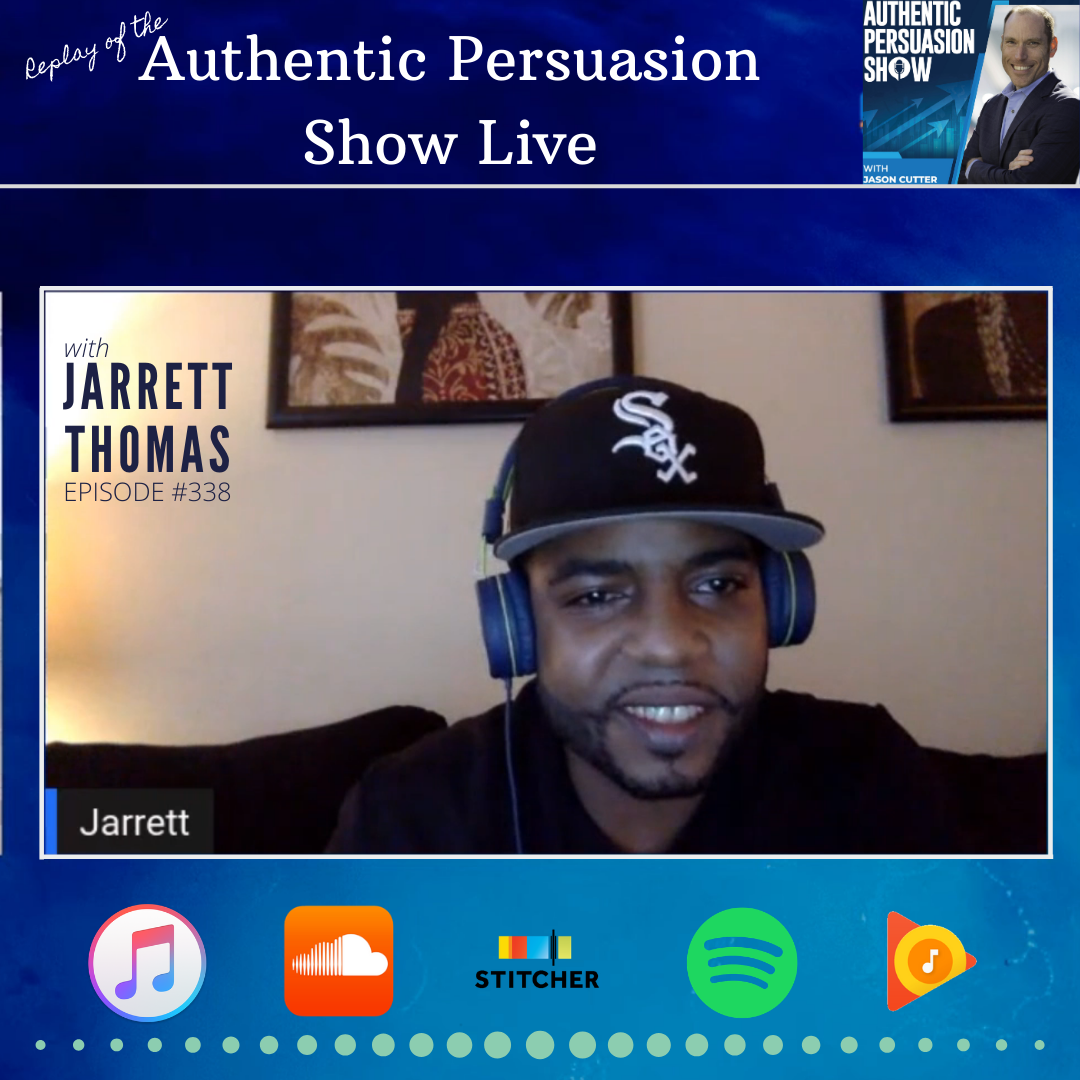Show Notes
Continuing the conversation with Bob Sager, founder of SpearPoint Solutions, on creativity, profitability, and effectiveness in business and sales.
Some gems from Part 3:
“If it’s a good fit, if I’m serving people well, I don’t have to trick them into doing business with me.”
“I think one of the things that kills salespeople is there reluctance to hear no from somebody.”
“The more that you care about the result for your customer, the better questions you’re going to come up with to ask.”
Download The Power of Authentic Persuasion ebook
Enroll in the Authentic Persuasion Online Course
Get help with your sales team
Connect with Jason on LinkedIn
Connect with Bob on LinkedIn
Bob’s Bio
The founder of SpearPoint Solutions, LLC, Bob’s professional background includes over three decades of experience in sales, leadership and training. He uses that experience and innovative thinking to develop business strategies that help organizations get unstuck. He also facilitates training on methods of thinking more creatively that can help any business or nonprofit thrive in the today’s economy. Among other accomplishments, Bob is the inventor of the innovative/creative thinking game, What’s the BIG Idea?™, author of the personal achievement book, Discovering Your Greatness and the book of innovative strategies and how to create them, 101 Freaking Brilliant Business Ideas: And Ten Ways YOU Can Create Your Own. He is also the host and chief innovator of the Out-THINK the Competition podcast.
Bob’s Links
Web site: www.SpearPointOnline.com
LinkedIn profile: www.linkedin.com/in/bobsager
Twitter handle: @Bob Sager
The SpearPoint Solutions company page on LinkedIn: www.linkedin.com/company/spearpoint-solutions-llc
Company page on Facebook: www.facebook.com/SpearPointSolutions
Links to Bob’s books:
Discovering Your Greatness: A Higher Level Thinking and Action Guide
https://www.amazon.com/dp/B0752Q2NXZ
101 Freaking Brilliant Business Ideas: And Ten Ways YOU Can Create Your Own
https://www.amazon.com/dp/B07NQ1X9KP
This book is published by our company. I curated the content and am one of 39 contributing authors.
Living a Wealthy Life: Stories of Gaining an Abundance in All Five Forms of Wealth
https://www.amazon.com/dp/B074TY55M7
Author page (where people can access all my articles) at Valuewalk.com
E210 – Transcript
Jason: Alright. Thank you for joining part 3 of my conversation with Bob Sager. If you missed it and make sure to go back and listen to part one and two, this is going to be the continuation of the conversation where we started off talking about creativity. Then we moved into sales. Talking about mindset, we’re talking about abundance kind of all over the place. So valuable for sales reps, managers in terms of this kind of creative concept. So here you go. Part three, enjoy.
Bob: You’ve got to first get their attention. So there’s a reason that your YouTube ads are skippable after five seconds at least, and a lot of. So, you know, it’s kind of a rare ad that catches my attention enough in that first five seconds. That’s what you gotta do. If you’re going to have a long form or blog posts or whatever it is, you better catch their attention right away.
Bob: And, um, do you mind if I make a couple of suggestions on how to do it? So opening with a question that can’t be answered by yes or no, that’s an excellent way to do it. Especially if it’s focused on the customer as he wrote. I think too many salespeople, too many companies generally they’re trying to be the hero. Right. You’re talking about how great they are and all they’ve accomplished. Well, the customer doesn’t give a crap about that. They don’t care about you until it’s important enough to them to care about you. So you got them in them, the hero in the story. Or you are as the guy. Helping the hero further their quest. So opening with a question that is focused on the customer as hero or furthering their journey. That’s really the way to go about capturing attention.
Jason: Yeah. No, and I think that’s huge and it’s something I’ve preached for a long time and I train and hopefully train out of salespeople a lot, which is that classic default response of the long self-centered monologue at the beginning of the sales interaction. Right? Whether it’s a phone call or it’s a meeting or you know, I go to conferences and I walk around the expo hall and you walk up to a booth and next thing you know it’s been two minutes of a long monologue about how great the company is and what they do and then it turns out it’s literally not a good fit, nor is it something I want. And so making that shift and getting away from sales rep centric focused conversations too, like you said, making the customer the hero if you can, how do you solve their biggest issues with your product or service?
Jason: And then the rest of it’s just easy. You don’t need closing lines and tactics when you take that approach versus the sales rep centric approach.
Bob: You make an excellent point, Jason. If you are focused on solving a customer’s problem, supplying their needs in a way that’s better than competitors, having them sign paperwork or write you a check or whatever. Oh, it’s just a natural thing.
Jason: It’s just that it’s the natural result in progression. That’s it. Like it’s just, it can happen.
Bob: Yeah. I did a lot of sales training early in my career. It was almost like you had to learn to trick people into signing. Well maybe that was effective at one time. I’m not sure. Well, I was never very comfortable with that. I thought, you know, if it’s a good fit, if I’m serving people well, I don’t have to trick them into doing business with me.
Jason: No, I completely agree something I preach a lot on everything I write and train and publish. It’s all about that thing. Right? Even when companies hire me, it’s not about the closing lines and strategies and the manipulation when you do it all up front. Right. Almost. Kind of like how a doctor operates. Lots of questions, lots of testing, lots of kind of understanding the problem and then a diagnosis, then a prescription and then that’s it. Like there is no, you know, let me think about it. It’s okay. This sounds good.
Bob: Well, they’re not going to think about it anyway right. As soon as you walk out the door, they’re not thinking about you anymore. It’s amazing how you know that’s, that’s just another form of no.
Jason: Well, and that one’s always important too as a, as a sidebar tip for salespeople or anyone listening. It is when you get that I need to think about it or send me an email or send me more information. You know, one of the things that I am constantly training reps to do is to not accept that at face value and push back a little bit and confirm. Because sometimes people do need information, sometimes they need to think about it. There’s analytical people who aren’t going to buy on the spot or maybe there’s a committee of people that need to be involved or a spouse. It could be anything, right? A legit reason. But to find out, are you wanting me to send you information because you actually want to do research and then we’re going to talk next week or are you just trying to be polite and nice and get rid of me without hurting my feelings or causing confrontation? Right. Like which one is it?
Jason: And if they say, I just wanted to get rid of you. I’m not interested in this, but I just didn’t want you to give me the high pressure sale. Then, great. Now I know. Sounds good. I’ll send it to you if you change your mind. Great. Otherwise, you know I’m not going to chase you down forever.
Bob: And listen, one of the things that I did. I spent 17 years in financial services and the way we did things, the way we operated is we would talk with the client on an initial call. We would gather information to find out if we could help them. We will do an analysis on where they work currently financially and their waste. We’d help them. We’d come back and recommend those last seconds. Oh, and so what we did on that is, what I did in any way is I would tell people upfront, look, we’ve got some great information here for you.
Bob: We think you guys have some positive recommendations. And the only thing I would ask is after we get done reviewing things tonight, tell me yes, you’re telling me no, you’re comfortable with that, right? And like you’re not gonna hurt my feelings if you tell me no, this is not, it doesn’t sound good for you. So let’s do that. Can we agree to that up front? And then so that way it was either a yes or no at the end of the day and you know, we weren’t chasing around after each other. Now I’m going to say you don’t follow up with people and that kind of thing. Cause sometimes timing is just off. But I think one of the things that kills sales people is their reluctance to hear no from somebody.
Jason: Well and I think that that combined with what you’re talking about, the manipulative style of like when you started out in sales and kind of when I started out in sales, is that that’s all in my experience based around scarcity.
Jason: It’s around this fear that there’s just not enough out there and anyone I talk to, I need to strangle hold until I get the deal out of them. Because if I don’t, where am I going to get more deals from? And again, it’s a very dangerous line because you’ll be a salesperson who comes from abundance. It says there’s enough people, there’s 7 billion people on the planet. I can find enough customers. Like be so abundant focused and you know, kind of positive thinking, the secret mode where instead of actually making your followup calls and moving people forward, you just kind of sit back waiting for things to fall in your lap, which won’t work long term. But if it’s a good fit, it’s a good fit. If it’s not a good fit, like your financial service example, then it’s not a good fit and move on.
Bob: I saw Jack Canfield talking about this, but there’s a bunch of people, uh, on a series on YouTube called go for no. And they talk about, uh, your convention story reminded me of this Jason, that they had this book, Jack Canfield and, his co author had this book chicken soup for the soul. Yeah. And uh, nobody wanted it. Right? Nobody was interested. And that’s the best like other than the Bible, I think that’s the best selling book in the history of the world. And they’ve sold over half a billion copies of the books in that series and nobody wanted it. Right? So all these people told him no, but he was just determined that he was gonna to find the right person. So I think it is important to think positive, but it’s also important to act positive hopes, not a strategy. Right. So, so you’ve got to take action on those positive thoughts. You’ve got to go out there and be as Bob Berg, uh, calls it a be a Go giver.
Jason: Yeah. Interesting. Well, and I like what you said about, you know, hope is not a strategy. That’s a good reminder to people. They think, you know, hopefully these people call me back. Well, you know, you’re not going to survive very long, especially financially based on hope.
Bob: One of my mentors in the financial services industry said he had a, his, um, prospect list and people stayed on that prospect list till they told him yes or they died or told him to go to hell.
Jason: Yeah. That’s it. I mean, and that’s really the result you want is you want that. Those are basically the only three options, but usually only think of the yes and the no option. But yeah, the uh, the third one too, which unfortunately happens sometimes, but yeah, I mean that’s it.
Jason: And a good sales professional who’s not using manipulation but it’s using persuasion and problem solving in a consultative sales approach is going to go and push somebody to go one of those two directions. The yes or the no. And then the creative part, tying this back to the initial part of our conversation is being creative. So part of that creativity is how do I get to them? How do I have that conversation? How do I break through their shell? You know, if the noise, right, whether it’s phone calls or emails, texts, that strategies we’re talking about. And then when I’m talking to them, the creative part in my opinion is the questions like you mentioned and asking questions and figuring out what is the actual problem that I can actually solve or what is their goal and what’s the positive thing I can get them towards with my product or service.
Jason: How can I be creative in helping them get to where they want to be, either myself or with something else I could point them in a better direction.
Bob: Right. And I think the more that you care about the result for your customer, the better questions you’re going to come up with to ask. I forget who it was that said, know you have one mouth and two ears you have to use them in that proportion.
Jason: I think everybody’s grandmother or parent said that to them.
Bob: Right. But you know, it’s so true. And people think, I think they had this perception, of selling is something where this person doing the selling is doing all the talking, but if you’re doing that, you are really missing it. You know, there’s one high quality sales training I had Jason, the guy said, if you say it, they doubt it, if they say it is the truth. And so I think if you’re good at asking questions that are empathetic with your customer, they’ll lead themselves and a lot of cases to the decision, even though you’re sort of guiding the conversation, they’ll lead themselves to the decision that you’re the right person to do business for them.
Jason: Alright. That’s it for part three. Make sure to subscribe if you haven’t always, and if you can leave a rating or review. All of that helps with people who are looking for a great podcast about sales, about mindset, about creativity, whatever it is, sales, sales, management related, all of that really helps. Please do that. I love that and appreciate it so much when people do, as always, keep in mind that everything in life is sales. People remember the experience you gave them.
![[E210] Higher Level Thinking with Bob Sager – Part 3 of 4](https://episodes.castos.com/salesexperiencepodcast/images/TSEP-Bob-Sager-Cover-Image.png)


